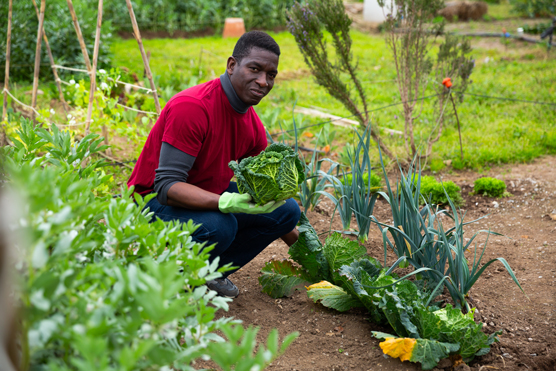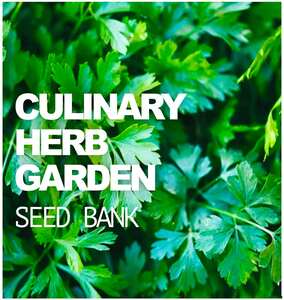Sustainable Gardening Practices for an Eco-Friendly Garden
Sustainable Gardening Practices for an Eco-Friendly Garden
Blog Article
The Comprehensive Overview to Horticulture: Discover the Advantages of Various Designs and Techniques
Horticulture includes a varied variety of styles and methods, each offering special advantages tailored to specific preferences and environmental contexts. From the structured style of formal gardens to the organic appeal of permaculture, understanding these variants is crucial for growing a room that not only flourishes but also mirrors personal values and aesthetic appeals. Furthermore, sustainable techniques play a crucial role in improving regional ecological communities and making certain long-lasting success. As we discover these different designs, it comes to be apparent that the selections made can dramatically influence both the garden's wellness and its contribution to the surrounding atmosphere.
Recognizing Horticulture Fundamentals
Understanding the fundamentals of gardening is crucial for growing a prospering and lasting yard. A successful horticulture venture starts with a strong structure of understanding pertaining to soil, plant choice, and environment considerations. Healthy dirt is the keystone of any type of garden; it provides essential nutrients, water retention, and an environment for beneficial bacteria - Gardening. Testing dirt pH and nutrient degrees can guide changes to maximize plant growth.
Selecting the right plants is similarly crucial. Understanding their certain demands-- such as sunshine, water, and spacing-- ensures compatibility with the local climate and dirt problems. This selection process should additionally take into consideration the development behaviors and lifecycle of plants, enabling a balanced and aesthetically pleasing garden.
Furthermore, effective watering methods are crucial. Over-watering and under-watering can both result in plant tension and illness. Carrying out a schedule based on seasonal changes and plant requirements can boost water effectiveness.
Popular Gardening Styles
What defines the significance of prominent gardening designs? Among the most popular styles is the cottage yard, defined by its casual design and a vivid array of blossoms and vegetables.
Conversely, the official yard embodies proportion and order, usually featuring geometric patterns and meticulously trimmed bushes. This style connects sophistication and sophistication, with meticulously chosen plants that enhance an organized aesthetic.
The Japanese yard uses a peaceful and meditative experience, utilizing natural environments like water, stones, and plants to develop a peaceful environment. It concentrates on simplicity and equilibrium, encouraging consideration.
Additionally, xeriscaping has actually gotten appeal, particularly in deserts (Gardening). It focuses on drought-resistant plants and effective water usage, advertising sustainability while enhancing landscape appeal
Advantages of Container Gardening
Container gardening uses a plethora of benefits that make it an attractive option for both novice and knowledgeable gardeners alike. Among the key advantages is adaptability; containers can be positioned in numerous places, allowing gardeners to optimize sunshine direct exposure and develop visually enticing arrangements. This flexibility makes it feasible to garden in areas where typical in-ground horticulture might not be possible, such as verandas, patio areas, or metropolitan atmospheres.
Furthermore, container gardening offers better control over soil problems. Gardeners can personalize the dirt mix to match certain plants, making sure optimum water drainage and nutrient schedule. This is especially beneficial for people living in locations with inadequate or infected dirt.
An additional considerable benefit is the decreased threat of insects and conditions. Container plants can be kept track of much more conveniently, and any type of concerns can be addressed promptly. Moreover, this approach can minimize the spread of intrusive types.
Lasting Gardening Practices
Lasting horticulture methods are essential for promoting ecological wellness and boosting biodiversity in our communities. These techniques prioritize eco-friendly equilibrium, resource conservation, and the usage of natural methods to reduce adverse ecological impacts. By employing Gardening techniques such as composting, gardeners can minimize waste while enriching dirt health, therefore promoting a flourishing yard ecological community.
Water conservation is one more essential aspect of sustainable gardening. Techniques such as rain harvesting, drip irrigation, and the use of drought-resistant plants can significantly reduce water use while guaranteeing that plants receive appropriate moisture. Integrating indigenous plant types into garden styles sustains regional wild animals and minimizes the need for chemical fertilizers and pesticides, which can be damaging to the atmosphere.

Eventually, lasting gardening techniques not only add to much healthier yards yet also promote a more resistant environment, providing long-term benefits to both the gardener and the surrounding community.
Tips for Successful Horticulture
To grow a successful yard, garden enthusiasts should prioritize mindful preparation and thoughtful implementation of their horticulture approaches. Begin by assessing the local climate and dirt conditions, as these factors substantially influence plant choice and growth. Choose plants that are appropriate to your setting, thinking about indigenous types that will love very little intervention.
Implementing a well-structured layout is crucial (Gardening). Use buddy planting strategies to promote biodiversity go to the website and all-natural parasite control, while making certain each plant has ample room for development. This not only boosts visual appeals but additionally enhances total plant health
Routine maintenance is crucial to an effective yard. Establish a consistent timetable for watering, weeding, and fertilizing. Mulching can help preserve moisture and reduce weeds, while likewise adding natural matter to the soil.
Do not ignore the relevance of observation. Consistently keeping track of plant wellness and development will certainly allow for timely treatments. Ultimately, be open to learning and adjusting; gardening is a continual process that profits from experience and experimentation. By prioritizing mindful preparation, implementation, and ongoing upkeep, gardeners can accomplish a vivid and productive yard that flourishes throughout the periods.
Verdict

In recap, the expedition of diverse horticulture designs and strategies exposes their complex benefits, adding to both aesthetic allure and ecological wellness. Container horticulture over here offers versatility and accessibility, while sustainable techniques enhance ecological stewardship.
Report this page